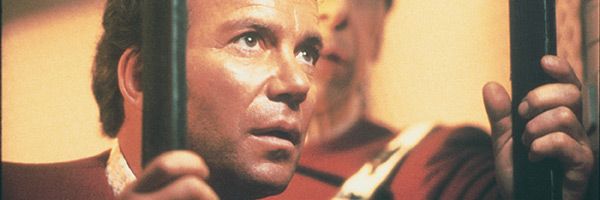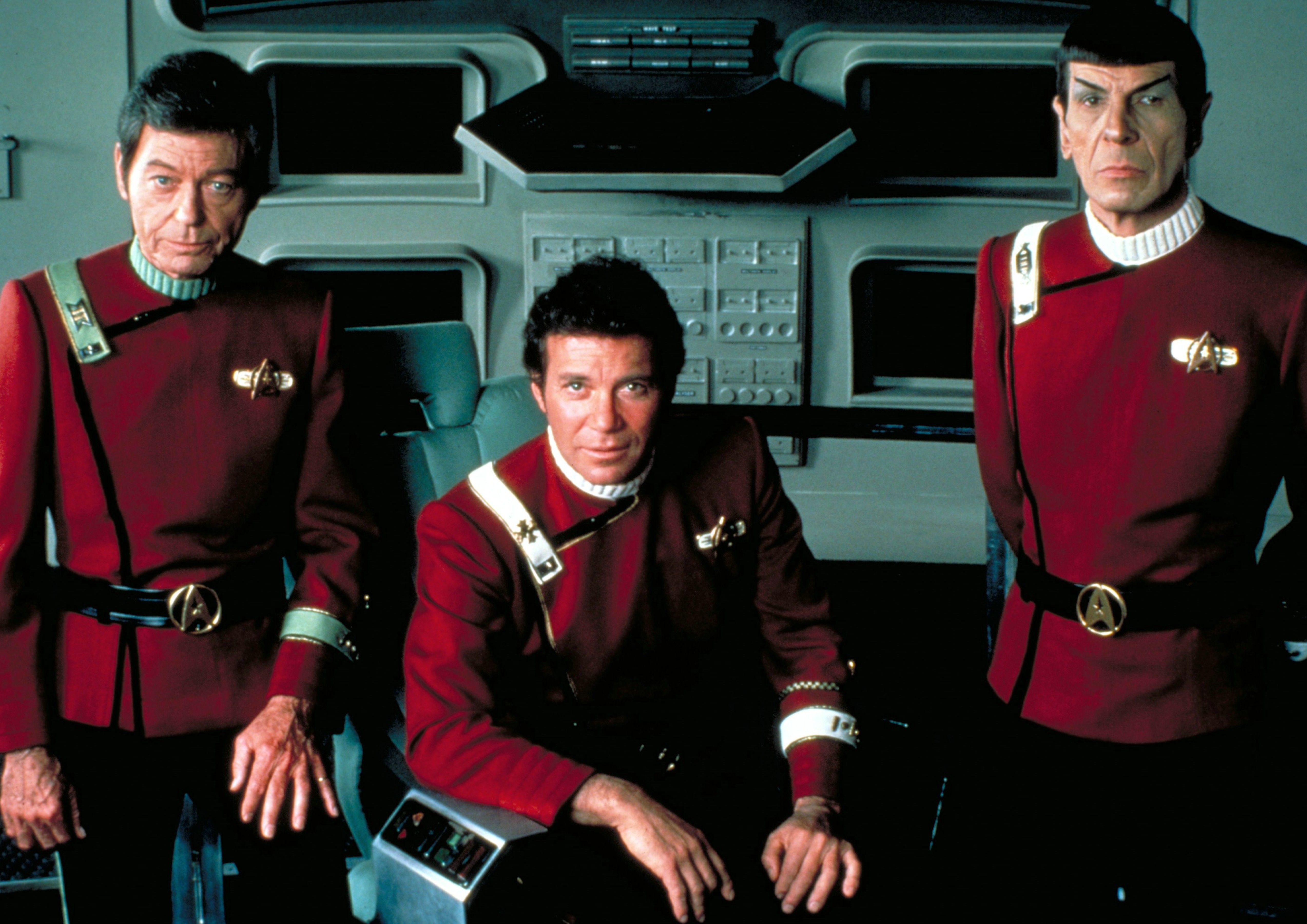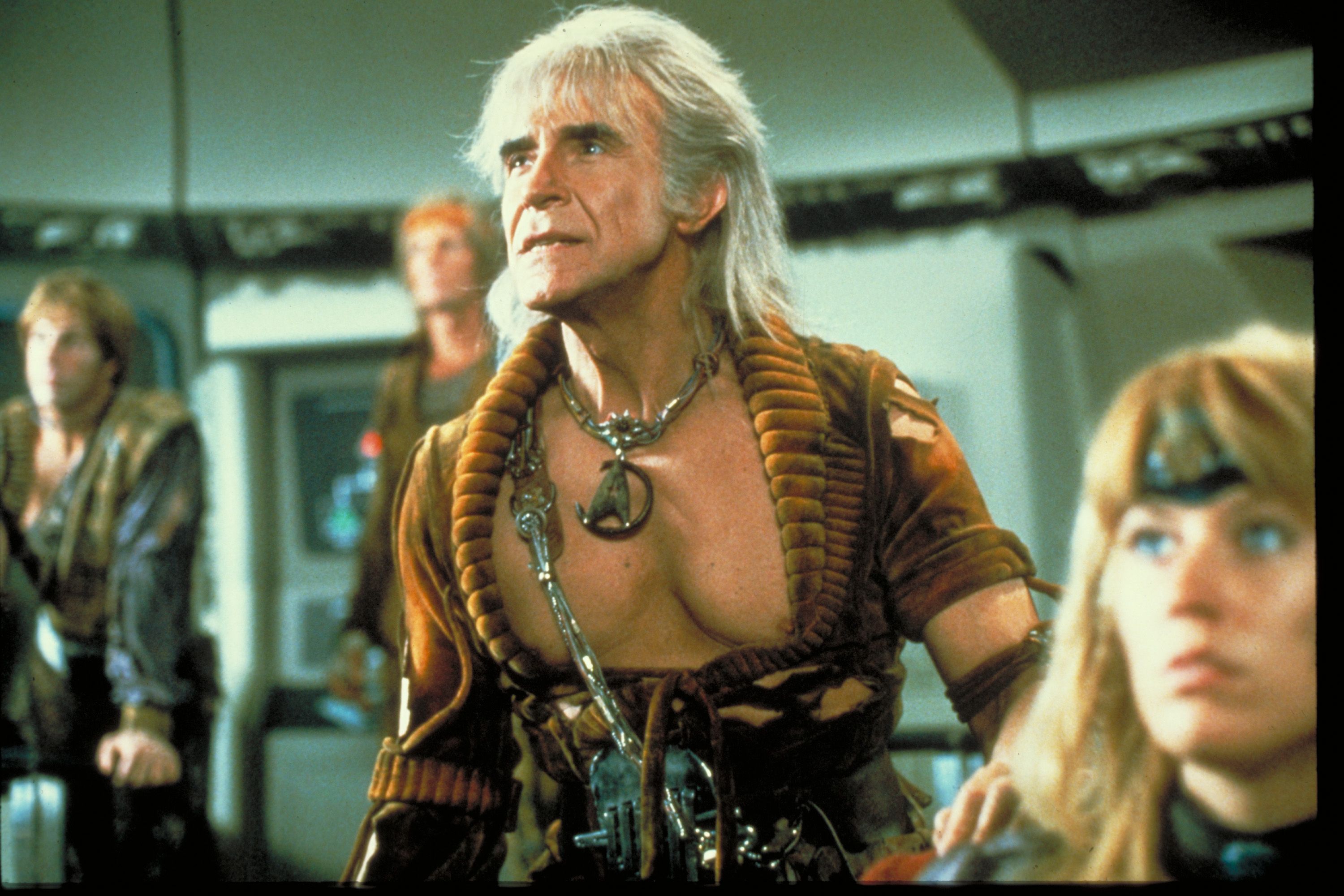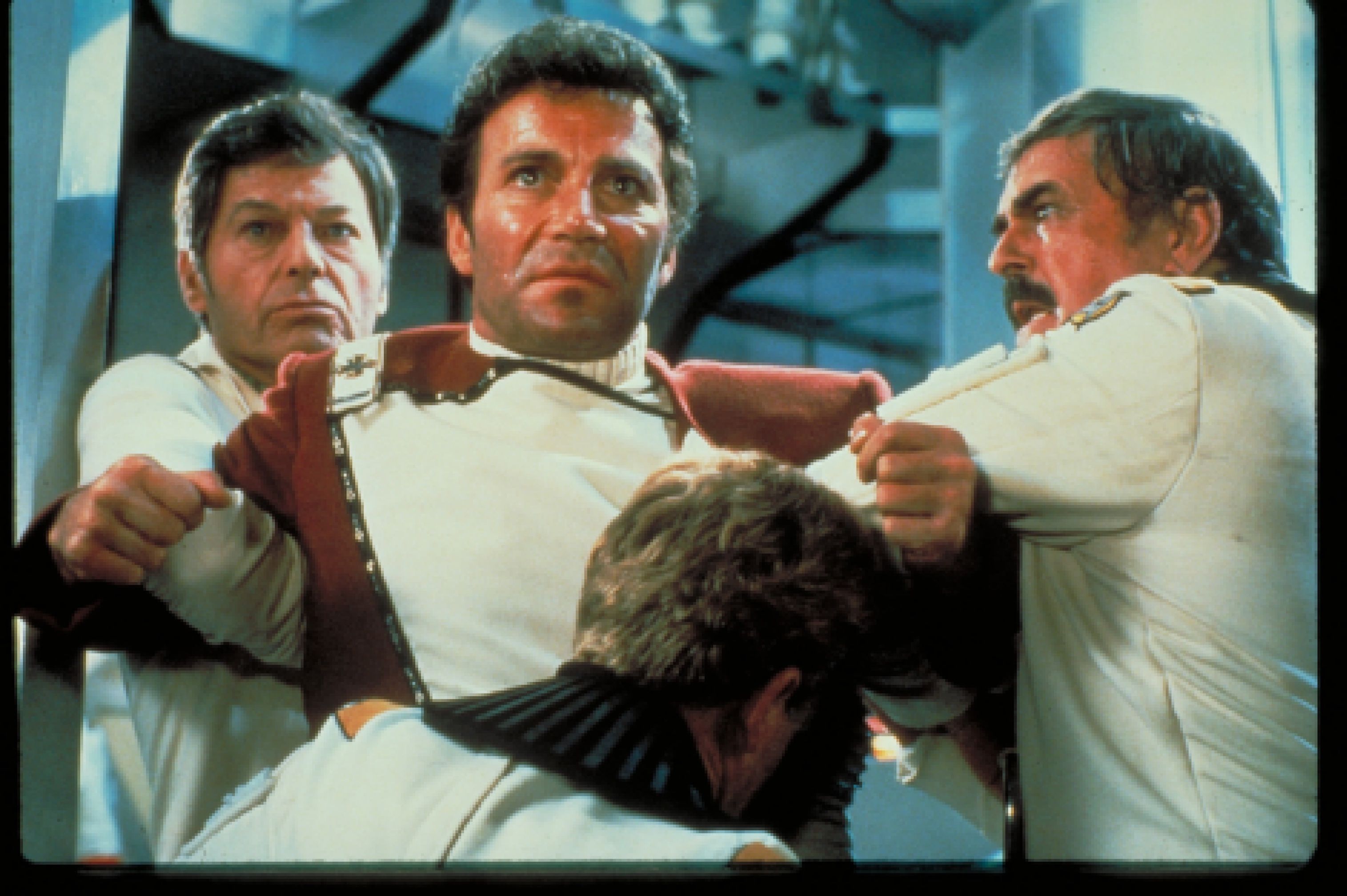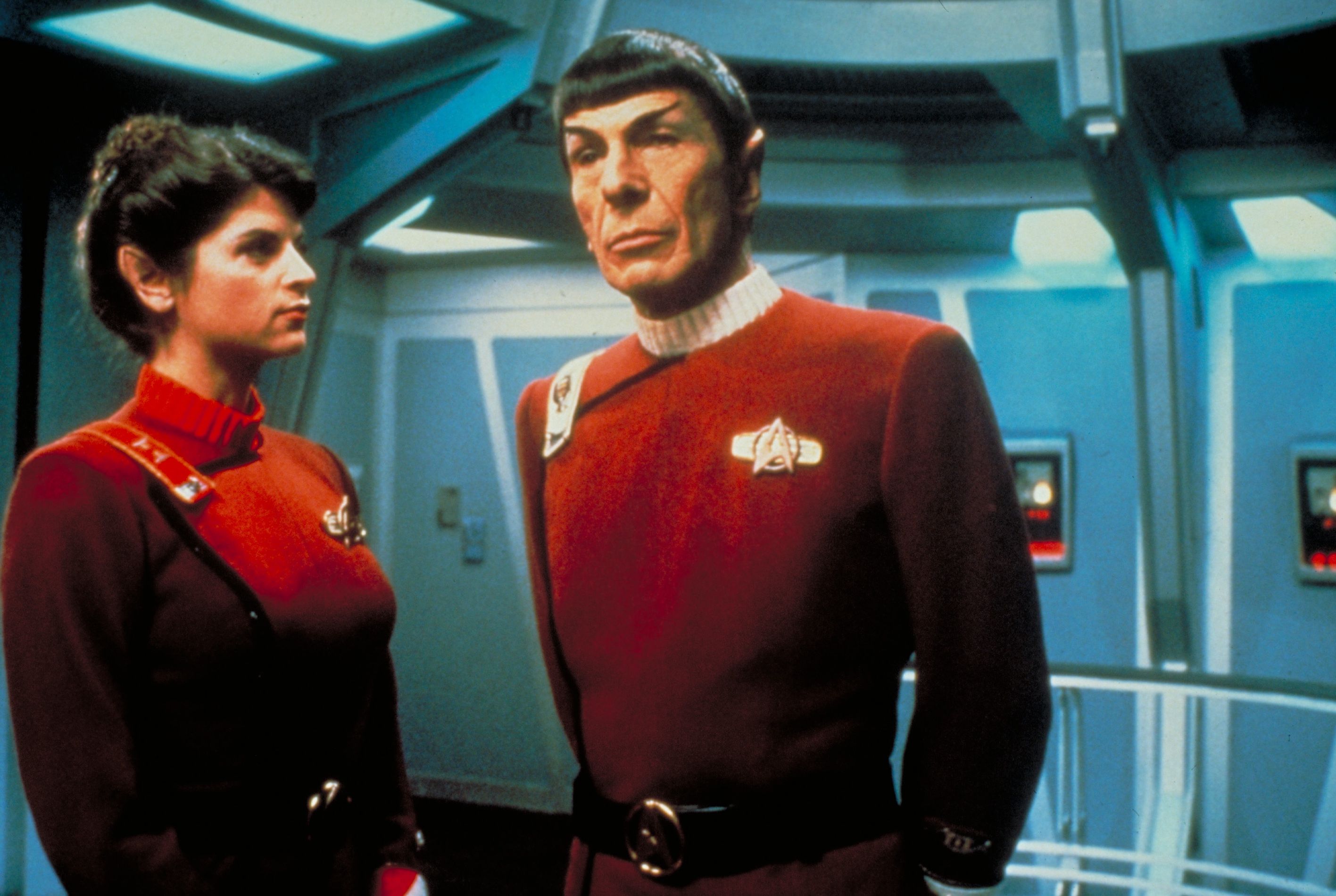We live in a day and age where no one can agree on anything. People are divided on almost every subject imaginable and it’s incredibly rare when a group of people can come together on anything. But if you get a group of Star Trek fans together, no matter their political background, no matter what they think is the best Star Trek show, I’d wager every person in the room would agree with this one statement: Star Trek II: The Wrath of Khan is the best Star Trek movie.
Released in the summer of 1982, The Wrath of Khan was made on a fraction of the budget compared to the first Trek movie (Star Trek: The Motion Picture) by using tons of cost-cutting techniques to keep the budget down including reusing models, sets, effects footage, and costumes from the first film.
But while the film might have done things on a tight budget, what sets it apart from the slow-moving first installment is director Nicholas Meyer's focus on action and a great villain. In addition, while Khan (played brilliantly by Ricardo Montalban) is a fantastic antagonist, I think what many people overlook is the decision by Meyer and the creative team to not have a stereotypical fight scene in the third act. In most movies, you’d have the two main characters on a collision course towards the eventual fight scene, but that’s not The Wrath of Khan. While you might not realize it, all the stuff between Captain Kirk and Khan Noonien Singh is done on view-screens and communicators. It’s what a futuristic fight scene would actually be and it’s one of the many reasons I love The Wrath of Khan.
With the film celebrating its 35th Anniversary, Fathom Events and Paramount Pictures are going to bring back the classic film to more than 600 theaters throughout the U.S. on Sunday, September 10th, and Wednesday, September 13th, at 2 p.m. and 7 p.m. (local time) each day.
To help celebrate its Anniversary and also to promote its return to theaters, I recently landed an exclusive interview with William Shatner. During the wide-ranging conversation, he shared some great behind-the-scenes stories from the making of the film, how the film had the highest opening weekend of all time when it first opened, how they all thought it could be the last time making a Star Trek film while shooting, his friendship with Ricardo Montalbån, how he was first told about Spock’s death, and so much more. Check out what he had to say below.
Finally, if you’ve never seen The Wrath of Khan on a movie screen, I’d definitely recommend checking it out. You can buy tickets to Star Trek II: The Wrath of Khan here: www.FathomEvents.com.
Collider: How are you doing today, sir?
WILLIAM SHATNER: So well. What about you?
Anytime I can talk to you about Star Trek: The Wrath of Khan is a great day.
SHATNER: Oh my gosh, that's great Steven.
I've been a fan of yours a very long time so I want to thank you for talking about the film with me.
SHATNER: Thank you.
A lot of people won't remember because it was 35 years ago, but when Wrath of Khan came out it had the biggest opening weekend of all time up to that point. Did you have any inkling that it was going to do that kind of business?
SHATNER: Nobody had any idea. We were holding our breath. It came on the heels of Star Trek: The Movie which today has made money and is looked on a little more fondly than it was when it was received. But because it was so rushed, I can remember we had the opening in Washington D.C., and the film, because they were carrying film around those days, the film hadn't arrived to be played in the theater in Washington til late that afternoon. It came handheld on a commercial airplane accompanied by the studio person.
That's crazy.
SHATNER: Yeah. So Star Trek: The Motion Picture was not well received because it was so rushed and didn't have the final editing time. So to all intents and purposes, that was it. The reviews weren't that great, business wasn't that great, that was going to be the end of it.
The owner of Paramount Studios at that time whose name I can't remember... his wife, so everybody said, "Okay, that's it, we've done it. We've made a movie of Star Trek." That guy's wife said to her husband, "You've got to try again. It's such a great series," and she convinced him to bring in Harve Bennett who said, "I could make it for less," and then he hired Nicholas Meyer, who had written a really great segment, and it was done much more efficiently, much more like a TV show. Smaller, contained, and when it opened, we were thinking, hoping, that it wouldn't follow the same fate as the prior movie.
Well one of the things that I love about the film, and I think people won't realize, is that you and Khan never do the stereotypical fight scene. It's all done via view screen or a communicator. Did you ever want to do one of those fight scenes, or were you sort of like, "This is really cool that we're not going to just do what normally happens in a movie."
SHATNER: To the best of my recollection, I don't even remember being conscious of it. There was so much dialogue between us, it never occurred to me until after we had done it that I never set foot on the same set. I had known Ricardo [Montalbån] prior to working with him on the movie, but only slightly. In fact, the story is that as a teenager, I was from Montreal, and I'd come down with my parents every so often to New York City just to see New York City. And now I was in my late teens, and I was down in New York for the first time by myself and I went to see a musical. And I saw this dancer who really was good, a handsome man, dancing, and I thought, "Well, what a remarkable dancer, and you don't see good looking men dancing." And then I went to a movie and I saw the same guy and he was a good actor, a Latin lover, thought, "Wow, this guy is really terrific." So I noticed Ricardo Montalbån before I met him. I was aware of this guy who looked really good on film.
Then I met him, and then we worked together, and he had ridden horses and I was so interested in horses, and he was quite an athlete, and he had a sore hip. And then it just degenerated into, he totally became totally incapacitated. And the fact that I didn't do a scene with him together has only latter day been aware and sad about.
I think it's one of the reasons why the film is so good. Because normally, a film would build towards you guys having some sort of scene where you're fighting. That's what every movie does. And I think it's stronger that it's this futuristic kind of fight scene, where it's just via communicator and view screen.
SHATNER: I agree, there's a tension there that remains throughout the movie.
One of the things that I found fascinating when I was researching to talk to you is that the death of Spock actually leaked when you guys were making the movie. Which in that day and age, before the internet, is kind of shocking. So do you remember when you first heard that that sort of information had leaked, and what was the reaction from everyone?
SHATNER: Here's my memory of it. I'm sitting in a Harve Bennett's office, and he's describing the death of Spock and I'm shocked. "You mean we're going to kill Spock?" And "Yeah, and he goes into this room and this plastic door and he puts up his hand." And I said well, "Kirk would put up his hand to the door and they would touch and slide down." I acted out what the way I thought the scene would go, which they ultimately did the way I thought of it, so I was not only privy to the way it was going to go, I helped plot the outline of the way it would look.
That scene is obviously one of the most iconic in Star Trek history, but speaking of another iconic scene is, when you scream "Khan," it is one of these scenes that everyone knows that it's probably the most iconic Star Trek scene that's ever been done. At the time when you were making it, did you have any inkling that this was going to be such a memorable scene?
SHATNER: No. I was, nobody told me that there was some thought about bringing him back and that Leonard [Nimoy] leaned over, McCoy [DeForest Kelley], and whispered "remember." I said, "What's that all about? Why are we killing Spock? Why are we killing Spock?" And they said, "Well, Leonard doesn't want to do it anymore. I was thinking god, if Leonard doesn't want to do it anymore, what's going to happen to Star Trek? If we were to make another film? Well, that's the way that went. They never told me.
At the time when you guys were making Khan, a lot of people felt that that should've been the first movie because the critical reaction to the first one wasn't there. Do you think that Khan should've been the first Star Trek movie, or do you think Khan's success is directly as a result of the first film you guys made?
SHATNER: Well I think you could that way. Who knew? The people heading up Paramount said, "Let's get Robert Wise, the great director, the great editor," he'd done so many movies for them. All those big musicals and ... So then Robert Wise says, "Yes, well my goodness what a coup that is, we're going to make a great motion picture." Well it didn't turn out to be a great motion picture because it lacked a humanity. It was special effects. Doug Trumbull wasn't edited because there wasn't time to edit the special effects. So the special effects went on too long and dragged a little here and there.
But the basic story lacked a humanity, because it was dealing with technology. Everybody fell in love with technology, which is a temptation in science fiction. You forget the human story, which is the most important thing.
No absolutely, and also the sequel, Wrath of Khan, has more of a swashbuckling type feel you know, and it's...
SHATNER: And a humanity. So the lesson that was learned, and we were given the opportunity to apply that lesson, was don't forget what Star Trek was originally, which was a good story.
Well speaking of technology, one of the things that Wrath of Khan did, which again I don't think a lot of people might realize, it was the first film to use an entirely computer generated sequence. But you guys used it effectively, because it used technology around the human story. Which you know the first film did, Douglas Trumbull as you said, do you remember your reaction when you first saw what computers could when you first saw the visual effects on Khan?
SHATNER: Well, the evolution of special effects, I've got to imagine people have written books and articles. I don't believe I've read any, but from those beginning primitive, you know, filming the Enterprise was done in a little studio closet and they would move, sometimes by hand, the Enterprise and the camera would pick it up and somebody would be flicking the lights, and it was so primitive. And I've got to imagine that unless there was some geniuses who could look into the future and say, "This is primitive and we've got good stuff coming down the pipe," I thought, well that's the way it is, that's the way we'll do things.
Nobody that I spoke to over the many years had any inkling of what computer graphics could do, and that goes for everybody up til recently, until Avatar, there were ... “It's nice, these are great explosions and little animals,” but until Avatar which is a milestone of what you could do with interaction of humans and the computer graphics, nobody knew. All this is new. We're just, all of us humans on earth are just beginning to, it's just beginning to dawn on us what this technology can do for us and against us. We're just, we're all staggered by learning this. And that was the same way it was with the computer graphics in films. Oh my god, you mean you don't need a green screen?
I'm always curious about how involved have you ever been with the editing room. For example on Khan, did you ever go to the editing room and see how Nicholas was working and see what takes he was using, or are you sort of the type of person that like, "Show me the finished film."
SHATNER: Well, to answer that, I would have no authority to say "use that." That would be awful. That just isn't done. I mean, as I said, you have no authority to do it, so it would be senseless. Not only that, I was in the editing room on Star Trek five, but it's an anathema to me to look at myself, so I chose the easy way out which is not to pay any attention, hope that these really good, that these fine talents would come up with the right combination. Which of course they did.
Yeah, I read a thing with Nicholas Meyer and he said that as an actor, you seemed to get better after doing a few takes. Do you agree with that assessment, and typically speaking, how many takes do you like to do?
SHATNER: You can't put a number on it. I'm sure that he wouldn't have said, those words don't sound like Nick, but of course if you rehearse something and "oh, that’s how it workd, but I'm going to do this," and you rehears a few times on camera because you never know what's going to happen, after a number of takes it gets better because you know what's working, what's not working.
By the same token, you might be able to do something simple in one take, do something complicated in 12.
When you guys were making the sequel, do you remember an atmosphere on set thinking you know, "If this doesn't work this might be our last adventure."
SHATNER: Everybody thought that each movie was the last time. They burned the sets. Every movie, they burned the sets because that was the last movie. There was no point in storing it because nothing else was going to happen.
It's so crazy.
SHATNER: It was crazy. It was expensive.
I'm still amazed as a film fan that more of these sets actually don't get saved or put somewhere. Even though I guess they're not really made to last.
SHATNER: They aren't made to last, so they couldn't ... You know, there was talk about making a ride using the original sets, but they were made to, they were plywood. They were backed up, something was holding a piece of plywood up.
My last thing for you because I'm running out of time, when you think back on the making of Khan, is there a day or two that you will always remember?
SHATNER: Well, long time ago, my acquaintanceship, burgeoning friendship, with Ricardo Montalbån, although we never were in the same scene, I saw him frequently at his home or we'd eat someplace together. He was a lovely man, I cherish my memory of him.
I guess I have time for one last question, which is do you remember with Nicholas Meyer, were there a lot of changes onset with the script, or do you remember if it was one of those productions that kind of stuck closely to it? Because I know he did a rewrite in a very limited time frame to get this film green lit.
SHATNER: Right. No, he wrote extremely well and best of my recollection, there was very little adjustment.
Cool. Sir, I have to tell you sincerely, it is an absolute pleasure to talk to you about this and have a fantastic day.
SHATNER: You too, the pleasure is mine.
Thank you.
SHATNER: Bye bye.

